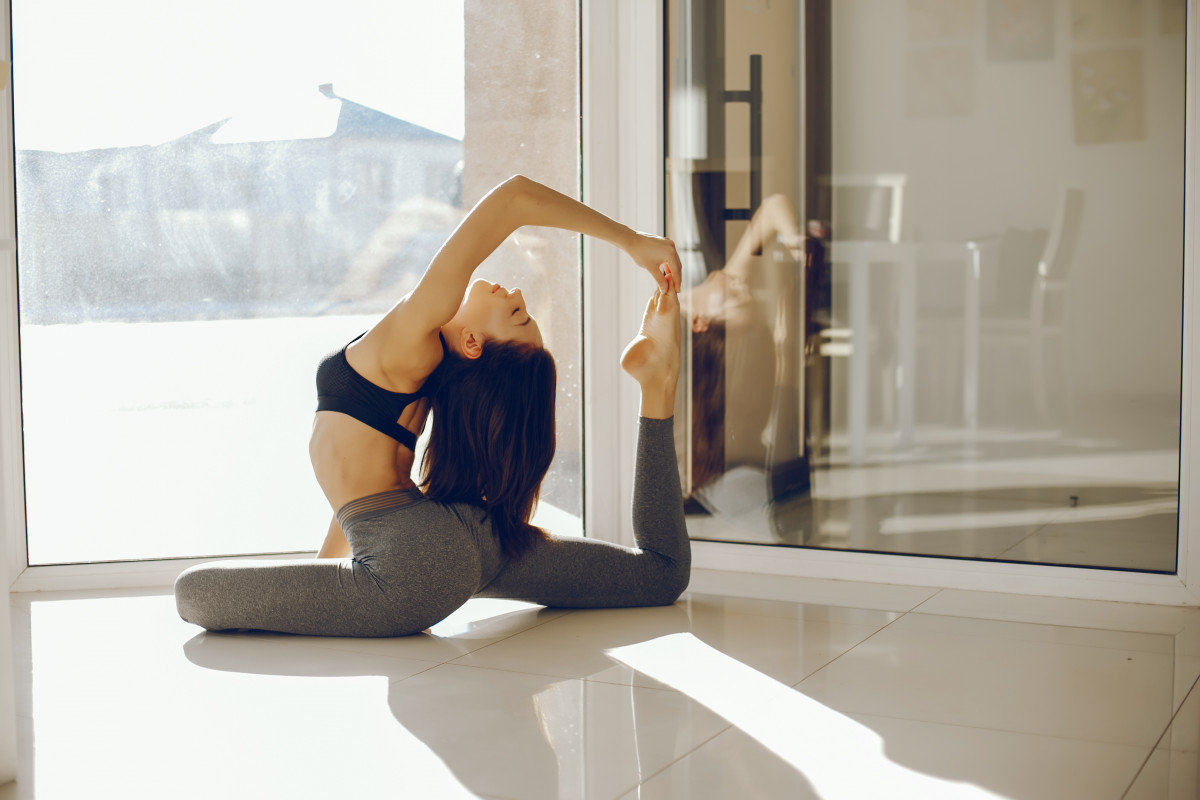Here are some ways to improve your flexibility in Pilates:
Focus on Breath and Control:
- Slow and Steady Wins the Race: Pilates emphasizes controlled movements. Don’t bounce or force yourself into deeper stretches. Breathe deeply and focus on lengthening your spine with each exhale.
Targeted Stretches:
- Hold and Release: Pilates incorporates many stretches throughout the routine. Hold each stretch for at least 15-30 seconds, feeling a gentle tension, not pain. Release slowly and repeat.
Exercises for Flexibility:
- Try these Pilates exercises known for improving flexibility:
- Cat-Cow: Stretches and mobilizes your spine.
- Swan: Opens your chest and shoulders.
- Roll-Down: Lengthens your spine and hamstrings.
- Side Bends: Targets your obliques and stretches your torso.
- Foam Rolling: Use a foam roller before or after your workout to target tight areas like glutes and hamstrings.
Listen to Your Body:
- Don’t Push Through Pain: Pain is a sign you’re going too far. Modify exercises or use props like straps or blocks to reach a comfortable stretch.
Consider a Flexibility Routine:
- Complement Pilates: Add a dedicated flexibility routine a few times a week outside of Pilates. This could include yoga or gentle stretches focusing on major muscle groups.
Be Patient:
- Consistency is Key: Like any aspect of Pilates, improving flexibility takes time and consistent practice. Don’t get discouraged if you don’t see results overnight.
Seek Professional Guidance:
- Consult Your Instructor: A qualified Pilates instructor can observe your form, suggest modifications, and create a personalized flexibility program within your Pilates practice.
By incorporating these tips, you’ll be well on your way to increased flexibility and a more well-rounded Pilates experience.
Pilates is a fantastic way to improve your flexibility! Here’s why:
- Movement with Stretching: Unlike static stretches held for long periods, Pilates integrates movement with controlled stretches. This warms up your muscles and allows for a deeper, safer reach.
- Focus on Core Strength: A strong core stabilizes your body during movement, allowing for better range of motion in other joints. Pilates strengthens your core, indirectly improving overall flexibility.
Here are some ways Pilates targets flexibility:
- Emphasis on Lengthening: Many Pilates exercises emphasize lengthening your spine and limbs. This constant focus on elongation helps improve flexibility over time.
- Isolating Muscle Groups: Pilates exercises often target specific muscle groups. This allows for a more focused stretch, improving flexibility in those areas.
Looking to maximize your flexibility gains with Pilates? Here are some tips:
- Listen to Your Body: Don’t push through pain. Modify exercises and use props to find a comfortable stretch that allows for a gradual increase in range of motion.
- Focus on Breath: Breathe deeply and rhythmically throughout your Pilates practice. This helps relax your muscles and allows for a deeper stretch.
- Targeted Exercises: Some Pilates exercises are particularly good for flexibility. Consider incorporating exercises like the Cat-Cow, Swan, Roll-Down, Side Bends, and stretches using the foam roller.
Conclusion
Pilates is a powerful tool for enhancing your flexibility. Here’s a summary of the key points:
- Synergy of Movement and Stretch: Pilates integrates movement with controlled stretches, creating a dynamic approach that warms muscles and allows for a deeper, safer reach compared to static stretches.
- Core Strength Matters: A strong core stabilizes you during movement, enabling better range of motion in other joints. Pilates strengthens your core, indirectly improving overall flexibility.
Pilates targets flexibility through:
- Lengthening Focus: Many exercises emphasize lengthening the spine and limbs, gradually increasing flexibility over time.
- Isolated Stretches: By targeting specific muscle groups, Pilates allows for a more focused stretch, improving flexibility in those areas.
To maximize your gains:
- Listen to Your Body: Prioritize comfort over pushing through pain. Modify exercises and use props to find a comfortable stretch that allows for gradual improvement.
- Breathe Deeply: Proper breathing helps relax muscles and allows for a deeper stretch.
- Targeted Exercises: Incorporate exercises like the Cat-Cow, Swan, Roll-Down, Side Bends, and foam rolling stretches.
Remember, consistency is key. Regularly practicing Pilates will lead to increased flexibility and a more limber you!
Discover more from Pilates All Ages
Subscribe to get the latest posts sent to your email.
